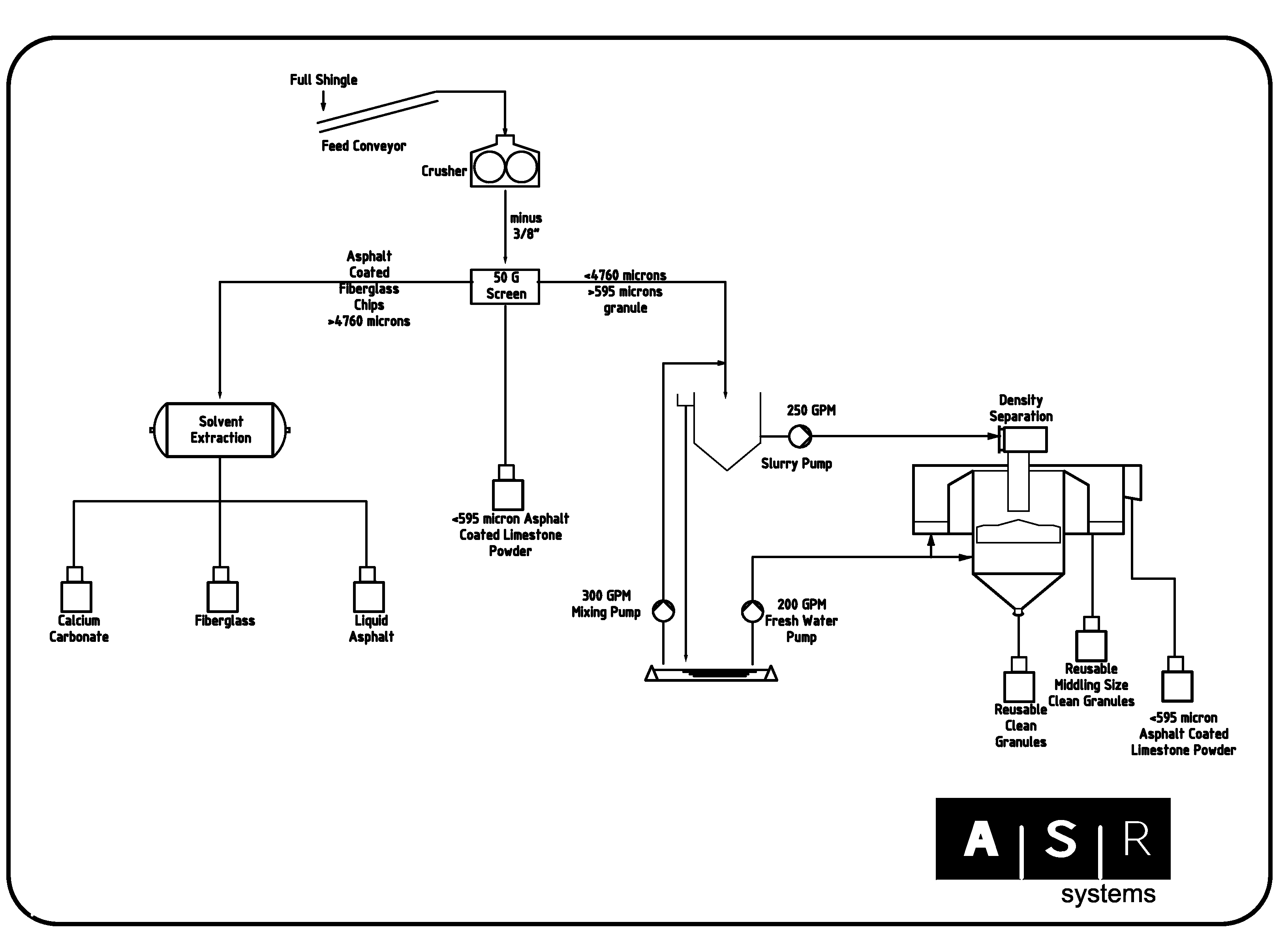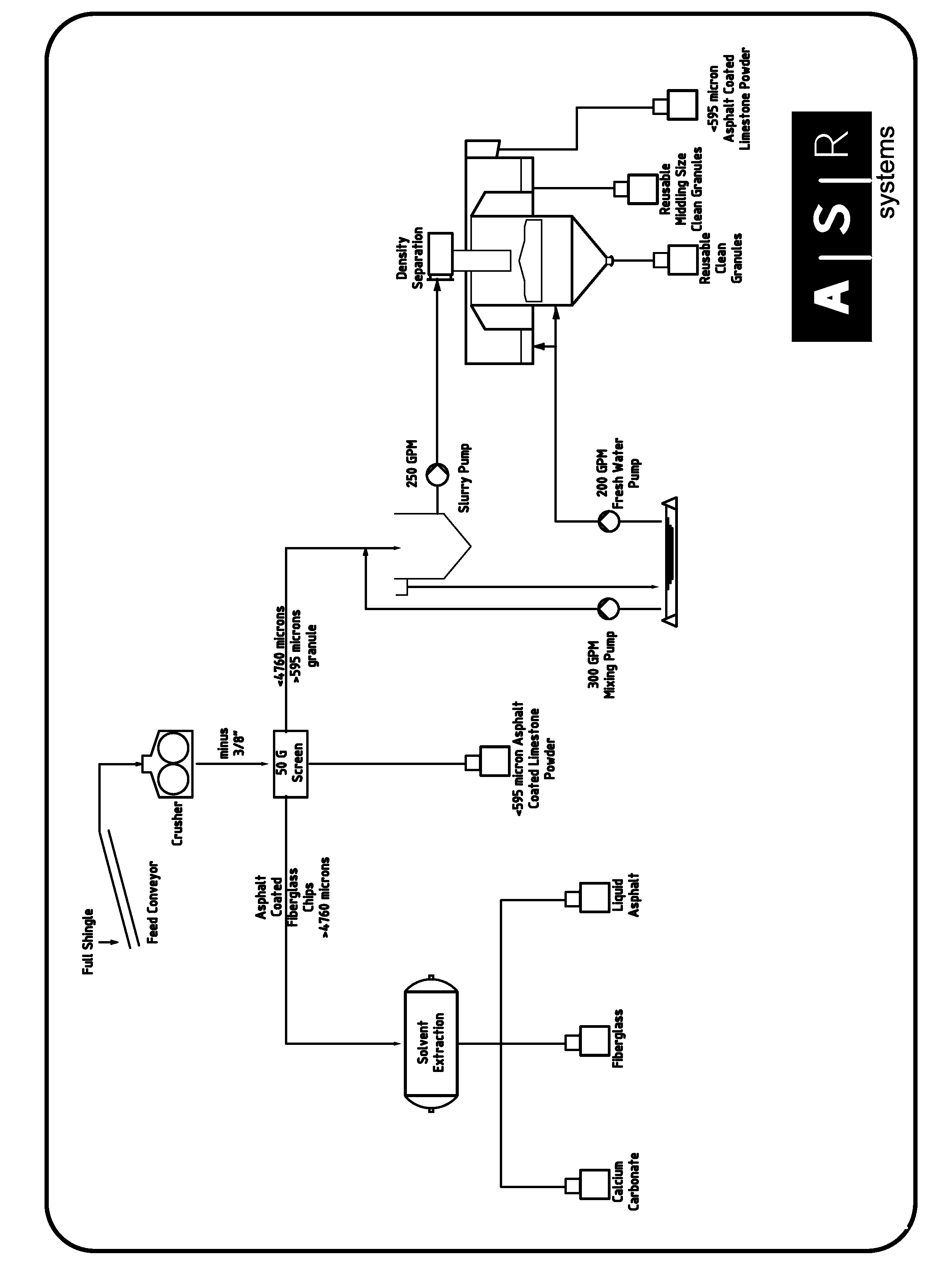Method for progressive separation and extraction of raw materials from residential roofing products
a technology of residential roofing and raw materials, applied in grain treatment, construction waste recovery, other domestic articles, etc., can solve the problems of large volume of waste created annually, waste also being detrimental to the environment, and contractors spending enormous amounts of money on waste hauling. , to achieve the effect of reducing the size of residential roofing products
- Summary
- Abstract
- Description
- Claims
- Application Information
AI Technical Summary
Benefits of technology
Problems solved by technology
Method used
Image
Examples
example 1
Steps of Progressively Processing Asphalt Shingles
[0029]1. Collection of used or manufacturer scrap shingles at processing center[0030]2. Organize shingles in sorting area[0031]3. Removal of large non recyclables in sorting area[0032]4. Place material in accumulation container[0033]5. Conveyor moves material from accumulation to picking conveyor and metal detector and then material moves to hammermill[0034]6. Hammermill reduces full shingle to less than ⅜″ in size[0035]7. Magnets remove nails[0036]8. ⅜″ minus material moves to 50 G screening[0037]9. Material is separated and classified into three sizes. Smaller than 595 microns, between 595 microns and 4760 microns, and greater than 4760 microns but less than ⅜″[0038]10. Smaller than 595 microns is considered finished goods and ready for use as asphalt coated limestone in asphalt shingle and related products[0039]a. Material is used in conjunction, or blended, with virgin raw materials as coating for shingles[0040]b. Resulting calci...
PUM
| Property | Measurement | Unit |
|---|---|---|
| size | aaaaa | aaaaa |
| size | aaaaa | aaaaa |
| size | aaaaa | aaaaa |
Abstract
Description
Claims
Application Information
 Login to View More
Login to View More - R&D
- Intellectual Property
- Life Sciences
- Materials
- Tech Scout
- Unparalleled Data Quality
- Higher Quality Content
- 60% Fewer Hallucinations
Browse by: Latest US Patents, China's latest patents, Technical Efficacy Thesaurus, Application Domain, Technology Topic, Popular Technical Reports.
© 2025 PatSnap. All rights reserved.Legal|Privacy policy|Modern Slavery Act Transparency Statement|Sitemap|About US| Contact US: help@patsnap.com


